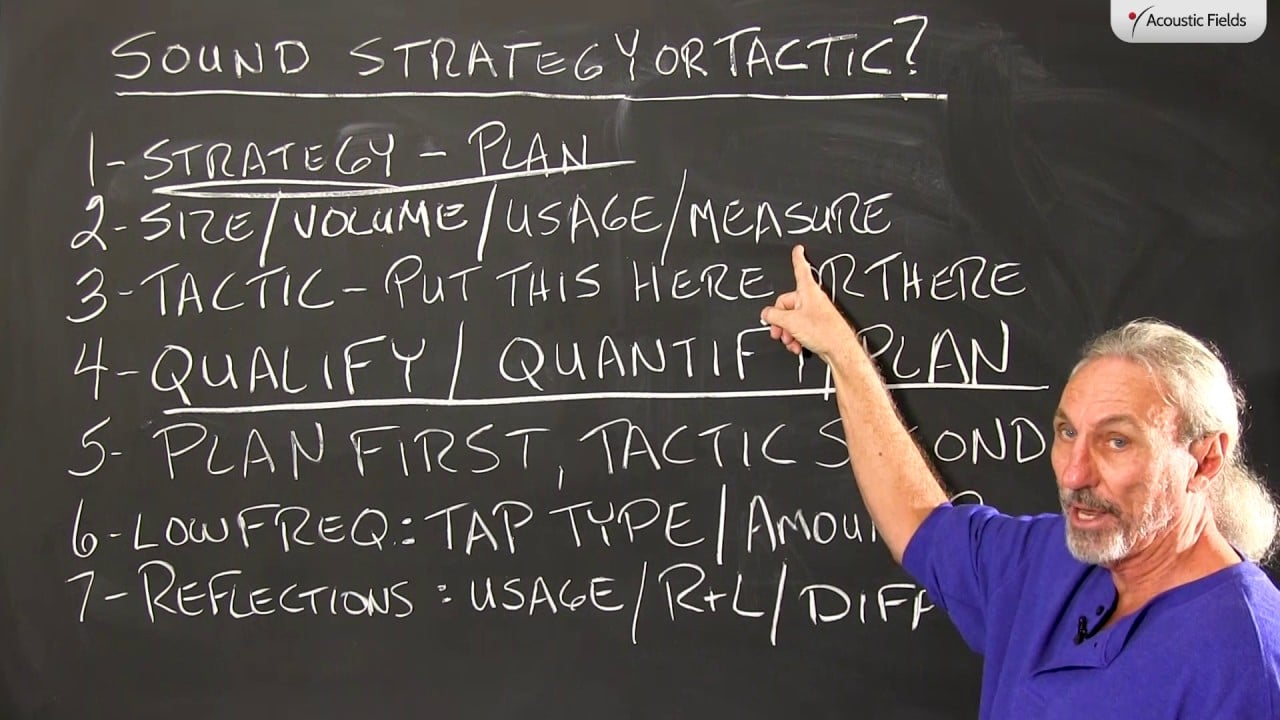I see a lot of people using tactics that they’ve read in the literature when it comes to treating their room, I see a lot of people using ideas and products and elements and all kinds of crazy things. to be honest with you, as tactics without any idea of why they’re doing it, without any idea of what impact it will have on the sound quality of the room, without any idea if that the highest and best use for the usage of my room. So we’re going to develop a strategy first, a strategy is a plan, we’re going to look at the whole room, we’re going to look at the size of the room, the volume of the room, we’re going to decide what we’re going to do in the room, we’re going to measure or we’re going to refer to existing measurements, we’re going to get some kind of idea, some kind of qualification of why we’re doing this.
We’re not just going to put this thing here or this thing there. I can’t tell you how many times people will fill out our room forms and they’ll be so proud of what they’ve done, they put this here and that there and this thing over here and when I asked them why they did that they have no reason why. They read about it, they thought it was a good idea; they had some open space so I’m just going to put it here or there okay. You can’t do that, you have to have a strategy or a plan first; you have to know why you’re doing everything in a room because good quality sound in a room is the combination of doing a lot of little things correctly but more importantly in the right order.
So let’s qualify first what are we doing in the room, how big is it, is it going to fit our usage, whatever our problem is going to be, you can know that ahead of time. Quantify what we have to do, if we have a big bump down here below 100 cycles, what are we going to do to flatten it out? how much surface area we’re going to need to get rid of that, okay. So we have to quantify and qualify those are things so we always want to use tactics second, they’re just tools. You’ve got to have a strategy first, apply the tactics to the strategy; this is where most people fail. They’ll use tactics first for reasons they don’t understand why and reading about it in the literature is not that good sometimes, there’s a lot of half-truths and misinformation out there. So don’t use tactics in place of strategy, have a plan and as for tactics, consider them as a tool to supplement your plan.
Low frequency energy, we know type, amount, position, the acronym tap we always like to follow, reflections, we have what are we doing in the room, is it live, is it voice, is control, what’s the right level of absorption, what kind of diffusion are we using in the room, all our tactics that supplement our plan. So we have to have strategy first, tactic second.
—
This is an unedited transcript from our video series from Acoustic Fields. There will be some errors in grammar and sentence structure that occur during this translation process.
For complete understanding and comprehension, please view the video which is included in this text. For any additional information regarding this topic or others relating to room acoustics, please contact us directly at:
P: 520 – 392 – 9486







